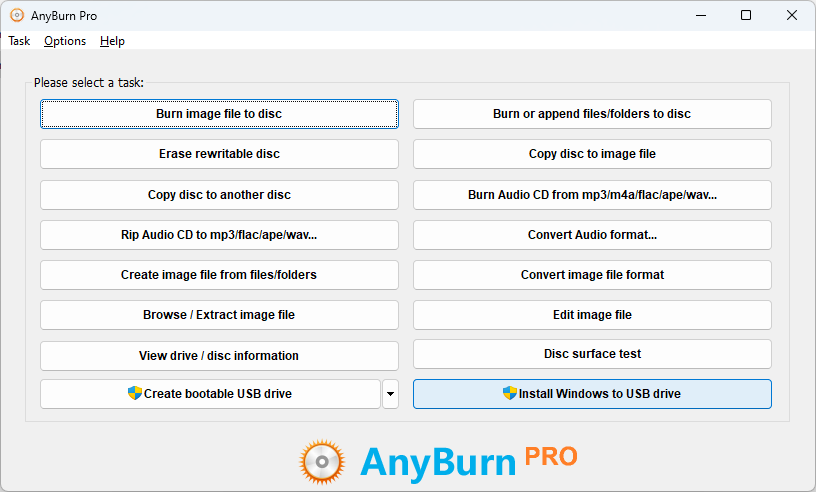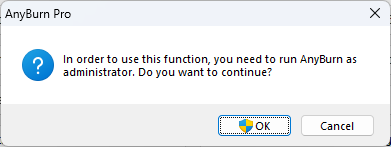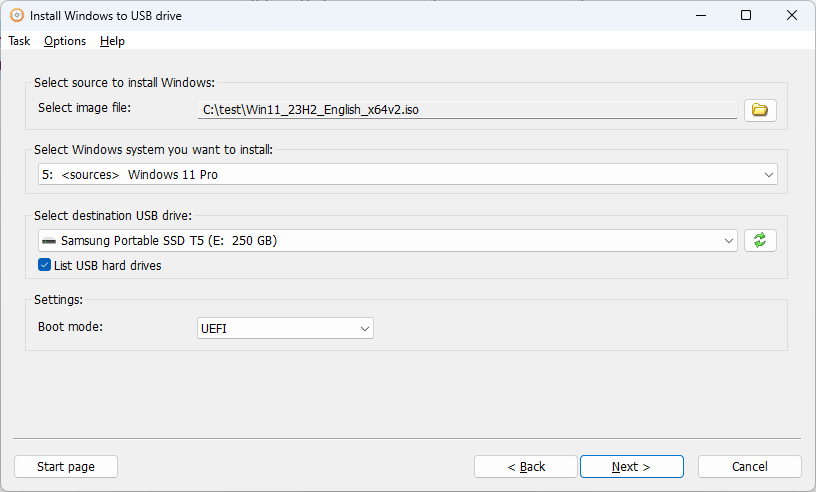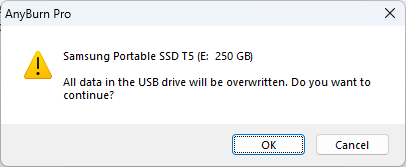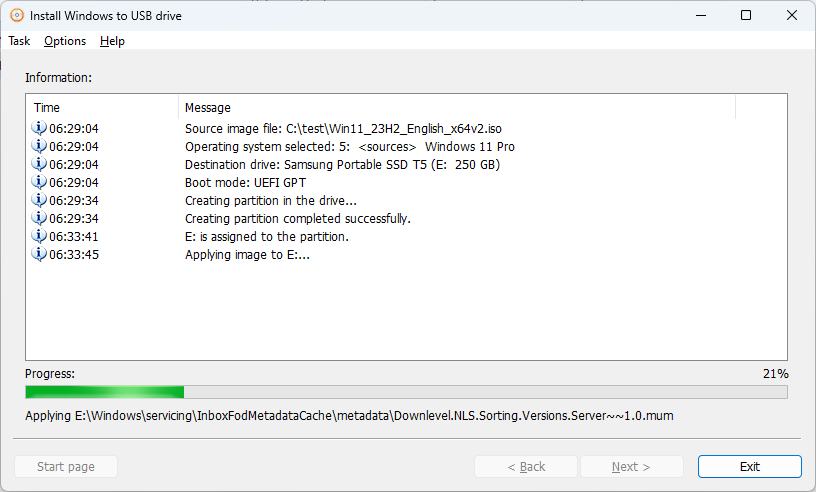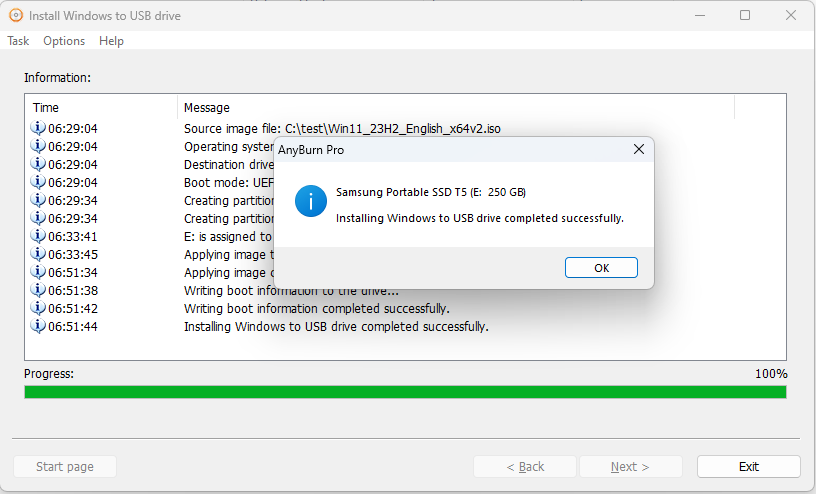
Run windows from USB drive
AnyBurn Pro can install Windows to USB drive, you can the run Windows from USB drive. It is also called Windows To Go. With this feature, you can run or experience a standalone Windows from the USB drive, without affecting the existing Windows on the computer. The supported Windows are Windows 11, Windows 10, and Windows 8.
To do this, you need a Windows ISO file, and a USB flash drive or a portable SSD drive with the capacity of at least 32GB. The Windows ISO can be downloaded from Microsoft official website. AnyBurn Pro will erase all files on the USB drive before installing Windows to it, so please backup all important files on the USB drive.
Please follow the steps to install Windows to USB drive, and run it from the USB drive.
Step1: Install Windows to USB drive
1. Run AnyBurn Pro (v6.0 or newer version, download here).
2. Insert the USB drive or portable SSD drive that you want to install Windows on it.
3. Click "Install Windows to USB drive". Because this feature requires system administrator privilege, you need confirm the UAC dialog to continue.
4. The "Install Windows to USB drive" page will show.
5. Click "Browse" button to select the Windows setup ISO file. After you have selected the ISO file, AnyBurn Pro will analyze the ISO file, and list all available Windows editions in the ISO file. Please select the desired Windows edition from the list.
6. Select the USB drive from the "Destination USB drive" list. If multiple USB drives are connected to the computer, please make sure that you have selected the correct drive. If your USB drive is not listed, please check the option, "List USB hard drives".
7. Choose the proper boot mode. For most of modern computers, UEFI mode is suggested. For some old computers which doesn't support UEFI booting, you can select BIOS mode. If your computer supports UEFI booting, but you want to boot Windows in BIOS mode, please enable CSM support in BIOS settings.
8. Click "Next" button to start installing Windows to USB drive. AnyBurn Pro will prompt you that all data in the USB drive will be overwritten. Please click "OK" to confirm and continue. Please make sure that you have backed up all important files on the USB drive.
AnyBurn Pro will then start installing Windows, and show the detailed progress information during the process.
9. After Windows has been installed to the USB drive successfully, you should receive a message indicating that the process completed successfully.
Step 2: Configuring the BIOS to boot from USB drive
You should now reboot and go into the BIOS configuration, and change the boot options to to boot from USB. Instructions for doing so wildly from system to system, but generally entail the following:
-
Reboot the system.
-
While booting (before Windows starts loading), get into the BIOS configuration screen by hitting something like F1, F2, Delete or Escape. Hotkey instructions are generally provided on the screen.
-
Go to the section that contains your boot devices.
-
With your USB drive plugged in, the USB drive should be listed. If it isnít, your system might not support booting from USB. Assuming that it is supported (as is the case with virtually all modern hardware), promote your USB drive to the primary boot device. If the Windows is installed in BIOS mode, please enable the CSM support.
-
Exit from the BIOS configuration, saving all changes.
Please be careful when you change the BIOS settings. You can seriously screw up your system by providing incorrect BIOS settings!
Step 3: Booting and run Windows from USB drive
Assuming that you properly configured your BIOS and your USB drive supports booting, Windows should now load. Depending on the speed of your USB drive, this may take a while. For the first time you run Windows from USB drive, you need finish some Windows setup process and activate Windows if needed.
If it isnít working, then double-check the following before making a scene:
-
Is your BIOS properly configured for booting from the USB device? (Is the USB device listed and does it have top priority?)
-
Have you correctly prepared the USB drive in step one? (Restart the procedure.)
-
Does your USB drive properly support being booted from? (Try another one!)
-
Try another boot mode when installing Windows to USB drive. You can select UEFI boot mode for most of computers, but if it doesn't work, please try another boot mode.
Copyright 2004-2025 Power Software Ltd. All rights reserved.
